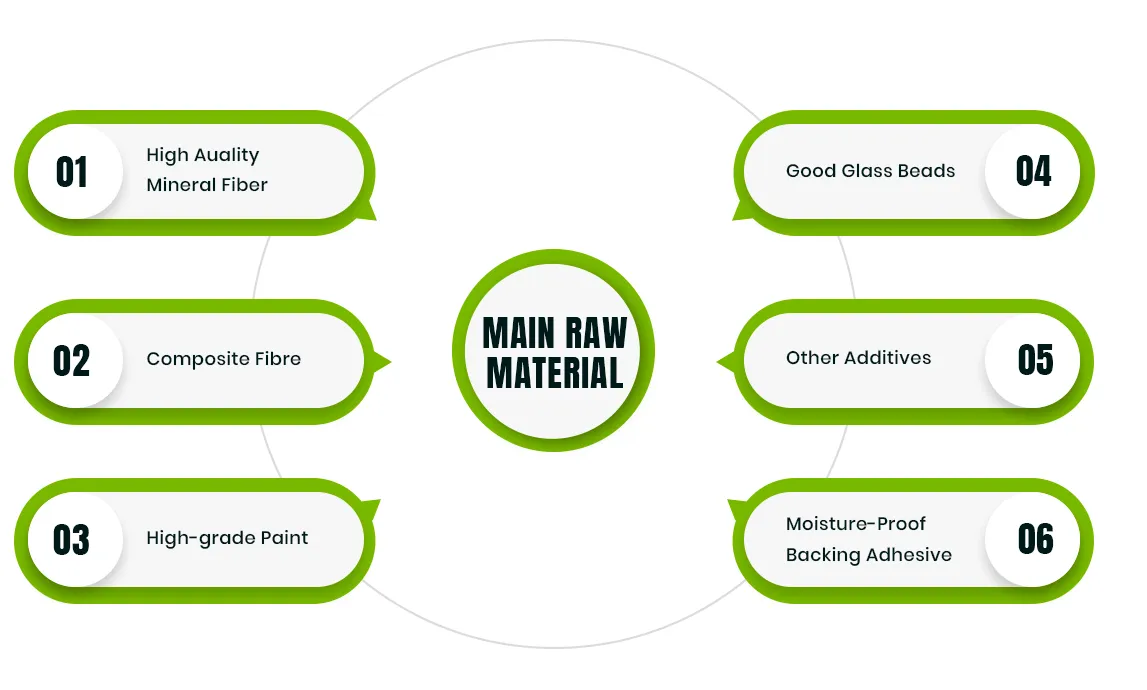Dec . 04, 2024 00:55 Back to list
Benefits and Applications of Mineral Wool Insulation Boards for Energy Efficiency
Mineral Wool Insulation Sheets The Smart Choice for Energy Efficiency
In today's world, where energy efficiency and environmental sustainability are at the forefront of building design, insulation materials play a crucial role in maintaining comfortable indoor environments while reducing energy consumption. Among various insulation options, mineral wool insulation sheets have emerged as a favorite among architects, builders, and homeowners alike. This article explores the benefits, applications, and features of mineral wool insulation sheets, highlighting why they are a smart choice for modern construction.
What is Mineral Wool Insulation?
Mineral wool, also known as rock wool or stone wool, is a type of insulation made from natural or recycled stone, typically basalt or diabase. The production process involves heating the raw materials to high temperatures and then spinning them into fine fibers, which are then formed into sheets or batts. This process creates an insulation material that is not only effective at preventing heat transfer but also possesses several other beneficial properties.
Key Advantages of Mineral Wool Insulation Sheets
1. Thermal Performance One of the most significant advantages of mineral wool insulation sheets is their excellent thermal performance. They provide a high R-value, which measures resistance to heat flow. This means they can keep homes warm during winter and cool during summer, reducing the reliance on heating and cooling systems.
2. Fire Resistance Mineral wool insulation is naturally fire-resistant, making it an ideal choice for building safety. It can withstand temperatures up to 1,200 degrees Celsius (2,200 degrees Fahrenheit) without melting or releasing toxic fumes. This property helps to enhance the overall fire safety of a building, providing peace of mind to homeowners and building occupants.
3. Sound Insulation Besides thermal insulation, mineral wool sheets excel in sound absorption. Their dense structure and fiber composition help to minimize sound transmission between rooms, making them an excellent choice for residential and commercial buildings where noise reduction is desired.
4. Moisture Control Mineral wool insulation is hydrophobic, which means it repels water and does not absorb moisture. This characteristic helps to prevent mold growth, a common issue in insulation materials that retain moisture. As a result, buildings insulated with mineral wool sheets are less likely to experience moisture-related problems.
mineral wool insulation sheets

5. Sustainability Many mineral wool products are made from recycled materials, making them an environmentally friendly option for insulation. Additionally, their energy efficiency can contribute to lower carbon footprints by reducing overall energy consumption in buildings.
Applications of Mineral Wool Insulation Sheets
Mineral wool insulation sheets are versatile and can be used in various applications, including
- Wall Insulation They are ideal for insulating interior and exterior walls, providing energy efficiency and soundproofing benefits.
- Roof Insulation Mineral wool is commonly used in flat and pitched roofs to prevent heat loss and control moisture.
- Floor Insulation These sheets can also be applied in floor assemblies to enhance thermal performance and sound control.
- Industrial Applications Due to their fire resistance and thermal properties, mineral wool insulation sheets are widely used in industrial settings, including HVAC systems, boilers, and pipes.
Conclusion
In summary, mineral wool insulation sheets are a superior choice for those seeking energy-efficient, safe, and sustainable insulation solutions. Their exceptional thermal performance, fire resistance, sound absorption capabilities, and moisture control properties make them suitable for a wide range of applications. As buildings continue to integrate eco-friendly practices, mineral wool insulation stands out as a reliable option in modern construction. Whether for residential or commercial use, investing in mineral wool insulation sheets is a step towards creating a more sustainable and comfortable living environment. With the move towards greener building practices, these materials will undoubtedly play a significant role in the future of insulation technology.
-
Quality Ceiling Trap Doors & Access Panels | Easy & Secure AccessNewsAug.30,2025
-
Durable Ceiling T Grid Systems | Easy InstallationNewsAug.29,2025
-
PVC Gypsum Ceiling: Durable, Laminated Tiles for Modern SpacesNewsAug.28,2025
-
Pvc Gypsum Ceiling Is DurableNewsAug.21,2025
-
Mineral Fiber Board Is DurableNewsAug.21,2025
-
Ceiling Tile Clip Reusable DesignNewsAug.21,2025







